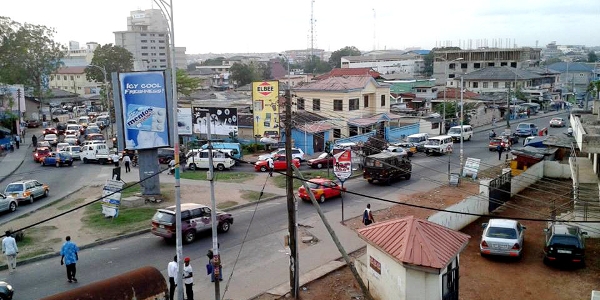
I have vivid memories of my first trip to Ghana. It was in July 2006 and I was in the country to do a research on Ghanaian farmers. It was in Accra, where I watched my team, Italy, win the FIFA World Cup final against France. Other than being a lucky charm to me, I thought Accra was a nice and safe town, but I felt that it had the potential to grow.
When I came back seven years later, I was pleasantly surprised by the changes. The city was dotted with new buildings, new roads, and had a really buoyant atmosphere. Of course, Accra is not representative of the whole country, but according to a recent report that Pierella Paci and I presented in October, growth and poverty reduction have been widespread in the country.
Now you may ask as to how Ghana was able to achieve this. In our report, Poverty Reduction in Ghana: Progress and Challenges, we show that sustained and inclusive growth in the last twenty years has allowed Ghana to more than halve its poverty rate, from 52.6% to 21.4% between 1991 and 2012. (Note: For comparing 1991 and 2012 poverty rates for both absolute and extreme poverty, the study used the 1999 poverty line. Official poverty rates use the new poverty line re-based in 2013.) The impact of rapid growth on poverty has been far stronger in Ghana than elsewhere in sub-Saharan Africa. Indeed, until 2005 for every 1% increase in GDP in Ghana, the incidence of poverty fell by 2.5% — far above the sub-Saharan average of 1.6%.
Its remarkable achievements in poverty reduction were made possible by diversifying the economy beyond agriculture while improving access to basic services, including education, health and electricity. This is reflected in the raising skill-set and educational attainment of the Ghanaian labour force, which has become increasingly mobile as the economy continues to shift out of agriculture and rapid urbanisation encourages greater employment in services and, to a lesser extent, industry. Meanwhile, improvements in agricultural productivity, driven in particular by cocoa and other cash crops, have facilitated structural transformation, though the sector still remains the main source of employment in the country.
As our report warns, however, future efforts to lower the incidence of poverty in Ghana will require containing regional disparities and vulnerabilities, as well as broadening access to opportunities for all citizens, particularly those in the north. Indeed, location has been found to be a major contributor to poverty in Ghana. Case in point – the rising income inequality between north and south is a striking demonstration of diverging employment opportunities across the regions. While poverty rates have fallen below 20% in the large area that spans Ashanti, eastern, Greater Accra and western regions, southern Brong Ahafo and coastal Volta regions, rates remain far above 40% in most northern districts.
Poverty is therefore increasingly concentrated in rural areas in the north, where one in three of the country’s poor now resides, compared to just one in five in 1991. Polarisation, meanwhile, is also on the rise, as the top decile of Ghana’s income distribution now consumes up to seven times more than the lowest earners in the country, compared to five times more in 1991, and the Gini index – a number that is used to measure inequality – has increased by 8%, from 37.5% to 40.8% in 2012. Despite all this, Ghana still remains a relatively equal society in sub-Saharan Africa, as its inequality measure is still well below the regional median and is one of the lowest among Africa’s most rapidly-growing economies.
Moving forward, if Ghana wants to sustain this growth trajectory that would help it achieve middle-income status, it will require a new generation of policy goals to consolidate its success within a context of difficult internal and external economic conditions and a rapidly-changing economic and socio-demographic environment. The country’s immediate policy priority must be to prevent further deterioration in the macroeconomic environment. GDP growth has slowed to just 3.4% in 2015 as energy rationing, high inflation and on-going fiscal consolidation continue to weigh on economic activity.
Longer-term development objectives will also require containing and reducing the vulnerability of those who have, so far, been left behind. This means a continued commitment to expanding access to public services, including health and education, and productive infrastructure, particularly electricity, as well as increasing the quality of these services. Other priorities — highlighted in our study as “win-win policies” — include improving the business climate to allow the Ghanaian private sector and better employment opportunities to flourish, investing in infrastructure and skills development, and increasing connectivity between rural and urban areas. Broadening the coverage of social protection and maximising their impact through better targeting will help reduce the extreme vulnerability of Ghanaian households to shocks.
The last 25 years have witnessed perhaps the greatest advances in Ghana’s history. Enabling the country’s poorest to break the vicious circle of income inequality and unequal opportunities will be the greatest achievement of a new Ghana, as it continues to set an example of prosperity and stability for the rest of the continent and the world beyond.
This article was first published on the World Bank’s blog.








